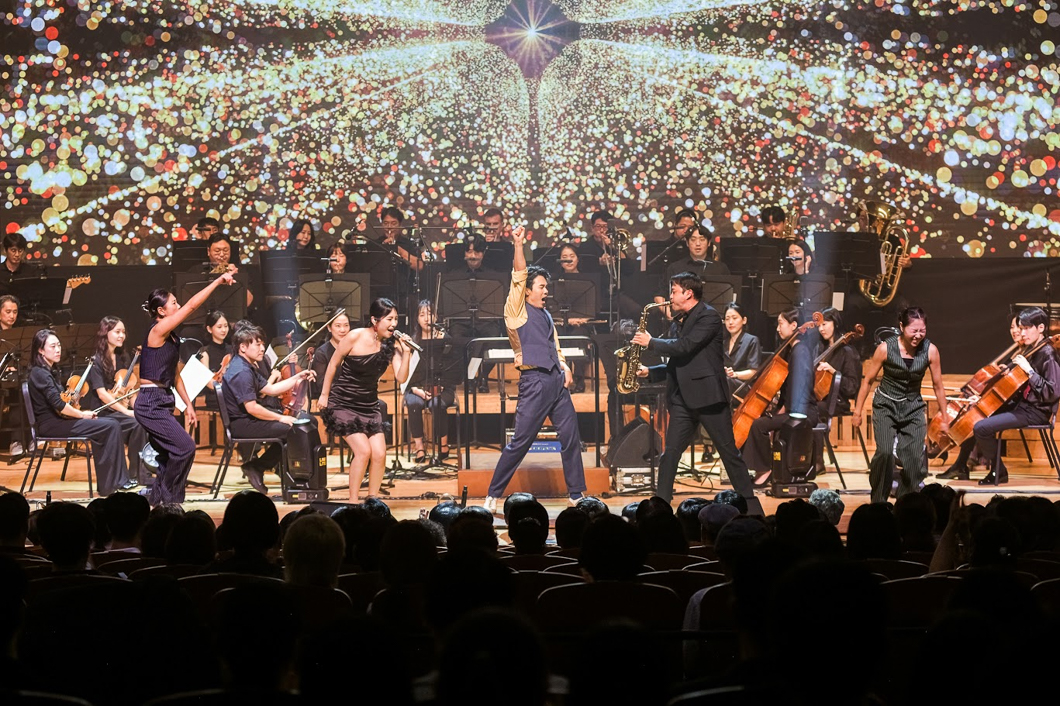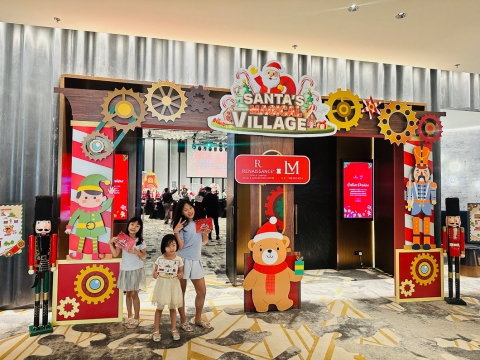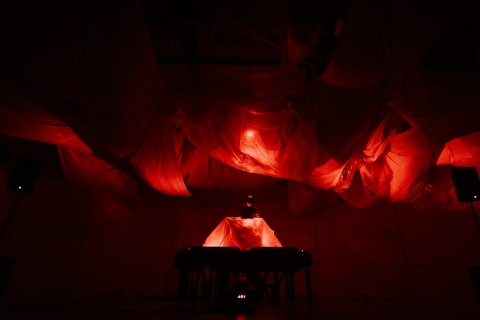Happy Go KL spoke with Korea Tap Orchestra (KTO), who told us more about themselves, their troupe, and their upcoming show, All That RHYTHM.

Please introduce Korea Tap Orchestra and tell us more about the troupe. How was the troupe formed, and how did the members come together?
Korea Tap Orchestra (KTO), is a professional tap dance company representing Korea, known for performing tap with a uniquely Korean flair. Just as an orchestra creates harmony through different instruments, KTO brings together tap dancers of diverse styles to create rhythmic harmony.
The team began in 2016 with the premiere of All That RHYTHM, formed through the collaboration of several active tap dance groups and dancers in Korea at the time. As the production evolved, the current members became its core.
Korea Tap Orchestra is led by two long-time figures in the Korean tap dance scene – Artistic Director Yongkap (Gavy) Park and Director Yono Lee – alongside the powerful female tap dancer Yoon Sohn, who helps co-lead the team.
Since 2021, through the KTO Internship Programme, the group has been discovering and nurturing promising young tap dancers. Korea Tap Orchestra currently consists of five full members, including Zion Yang and Kyuri Kim, and four guest members.
Would you please tell us more about each member, and the roles they play in the troupe? Do the members have different responsibilities?
All members participate as tap dancers in regular rehearsals and performances, but they also take on specific roles within the group:
- Captain Yono Lee – Creative direction, show production, choreography
- Artistic Director Gavy Park – Performance direction, artistic concept, choreography
- Trainer Yoon Sohn – Member training, choreography
- Regular member Zion Yang – Stage operations
- Regular member Kyuri Kim – Costumes

What is tap dance, and what do you think the charm of it is?
Tap dance, from our point of view, “is a dance you hear with your ears and music you see with your eyes.”
It is an art form that combines rhythm and movement — a fusion of dance and music. Tap dancers create dynamic rhythms by “playing” the floor with their feet. It is a unique art form where one can feel both musical immersion and the rhythmical sensation of dance at the same time. We hope the audience will be fully captivated by the three-dimensional charm of tap dance through this performance.

Do the members in Korea Tap Orchestra dance in other genres besides tap?
Of course! To reflect our goal of embodying a uniquely Korean identity, all members take weekly classes in Korean traditional dance and traditional percussion instruments. In addition, each dancer learns and incorporates other dance styles suited to their individual interests and strengths — such as swing, ballet, or K-pop dance — which are often reflected in our performances.
How often does Korea Tap Orchestra perform in Korea on average? Are all of your performances tap dance-based?
Korea Tap Orchestra gives around 50 to 60 performances a year, ranging from large-scale concerts to smaller events. As a tap dance company, most of our performances feature tap – including solo concerts, festivals, and corporate events.
We not only stage pure tap performances but also collaborate with traditional Korean music (gugak), singers, orchestras, and media art. We also participate in film and commercial projects, expanding our artistic boundaries across different genres and media.

Besides All That RHYTHM, do you perform other kinds of shows? If so, what makes each one different?
All That RHYTHM is Korea Tap Orchestra’s signature show, but we also perform several other productions:
- TAP in JAZZ – A show dedicated to jazz, the original musical foundation of tap dance.
- Sorikkun, Tapkkun – A collaboration between Korean traditional music (gugak) and tap.
- The Woodpecker’s Morning – A cheerful show that brings together tappers of different generations.
While All That RHYTHM introduces tap dance to the general public in an accessible way, TAP in JAZZ caters to jazz and tap enthusiasts. Sorikkun, Tapkkun highlights the artistic potential of merging tap with Korean traditional culture, and The Woodpecker’s Morning presents an enjoyable encounter between multiple generations of tap dancers.
Tap dance remains a rare art form not only in Korea but around the world. That is why Korea Tap Orchestra continues to create diverse performances — to share the many facets and attractions of tap with a wider audience.

In Kuala Lumpur, Imperial Society of Teachers of Dancing (ISTD) tap dance seems to be the dominant form taught here. Does Korea Tap Orchestra also follow ISTD tap? If not, what are the differences between Korea Tap Orchestra’s style and ISTD tap?
No, we don’t follow the ISTD system. There is no such certification system in Korea. Korean tap dancers usually start through various routes — such as university musical theatre programmes or private studios — and later, once they reach a certain level, they may study abroad in New York, seek out mentors whose style suits them, or form their own teams and continue training independently. Rather than progressing through examinations, Korean tap dancers develop naturally as they deepen their passion and immersion in tap dance.
The ISTD structure is excellent for systematic learning and broad education — especially for children and students — whereas, a self-directed or apprenticeship-style approach is often more effective for nurturing style and improvisation.
Unlike more formalised dance forms such as ballet or ballroom, tap dance places much greater emphasis on individuality and expression. Improvisation grows through direct experience and freedom to experiment, which helps dancers mature faster and find their own voice.
The ISTD-style curriculum-based teaching originated in the UK. In contrast, in the United States the form generally developed along two main lines: Rhythm Tap and Broadway-style or Theatre Tap. Korea Tap Orchestra’s work is primarily rooted in rhythm tap, though as a performance company, we also incorporate elements of theatre tap. Audiences in Malaysia will likely experience a new and refreshing side of tap dance through our show.
What vision does Korea Tap Orchestra have for the future?
Next year marks Korea Tap Orchestra’s 10th anniversary. We hope to create even more enjoyable and original works that will introduce tap dance to wider audiences. Our goal is to reinterpret this Western art form in a uniquely Korean way and introduce K-Tap Dance to audiences around the world. We want the name Korea Tap Orchestra to be synonymous with tap dance itself.
Please tell us more about your upcoming performance in Malaysia. Is this your first show abroad? If it is, why did you choose Kuala Lumpur as your first destination?
Our connection with the Malaysian tap dance community began in 2018, through Tapworks KL organiser Pixie Ng, and we have maintained a close relationship ever since. Personally, starting from Malaysia, I (Yono Lee) have gone on to collaborate actively with artistes in Singapore, Hong Kong, Japan and other Asian countries — so Kuala Lumpur holds a very special meaning for me.
When I first came here alone as a tap dancer in 2018, I never imagined I’d one day return with my own troupe and perform our work together. It’s truly an honour and a joy. Kuala Lumpur is a deeply meaningful place for KTO to begin its international journey.
In addition, this show is particularly special as the organiser, Eve Thong from Tribe Creative, is personally connected to tap dance — having met me in Korea as her son’s tap dance instructor. She has now invited the troupe to perform in KL, hoping to share the unique energy of K-Tap with Malaysian audiences.

What can the local audience expect from this show?
When people think of “tap dance”, they often imagine short numbers in films, musicals, or school recitals. This, however, is an 80-minute full-length concert made entirely of tap.
Together with local musicians and Dancesteps Studio’s rookie tappers, Korea Tap Orchestra will present a vibrant performance that will let audiences experience the full, multi-layered appeal of tap dance like never before.
Lastly, do you have a message for the audience in Kuala Lumpur?
We are working hard in both Seoul and KL to prepare for this performance. Whether you’re already learning tap, enjoy watching it or you are discovering it for the first time, this is a show that everyone, regardless of age and background, can enjoy together.
We hope you’ll come and feel the passion and energy of Korea Tap Orchestra on stage at PJPAC Nero on 2 November, 8 p.m. See you soon!
Support the performing arts and head on over to PJPAC to catch All That RHYTHM for one night only!
Tickets are available on ONETIX (seats are limited).



















